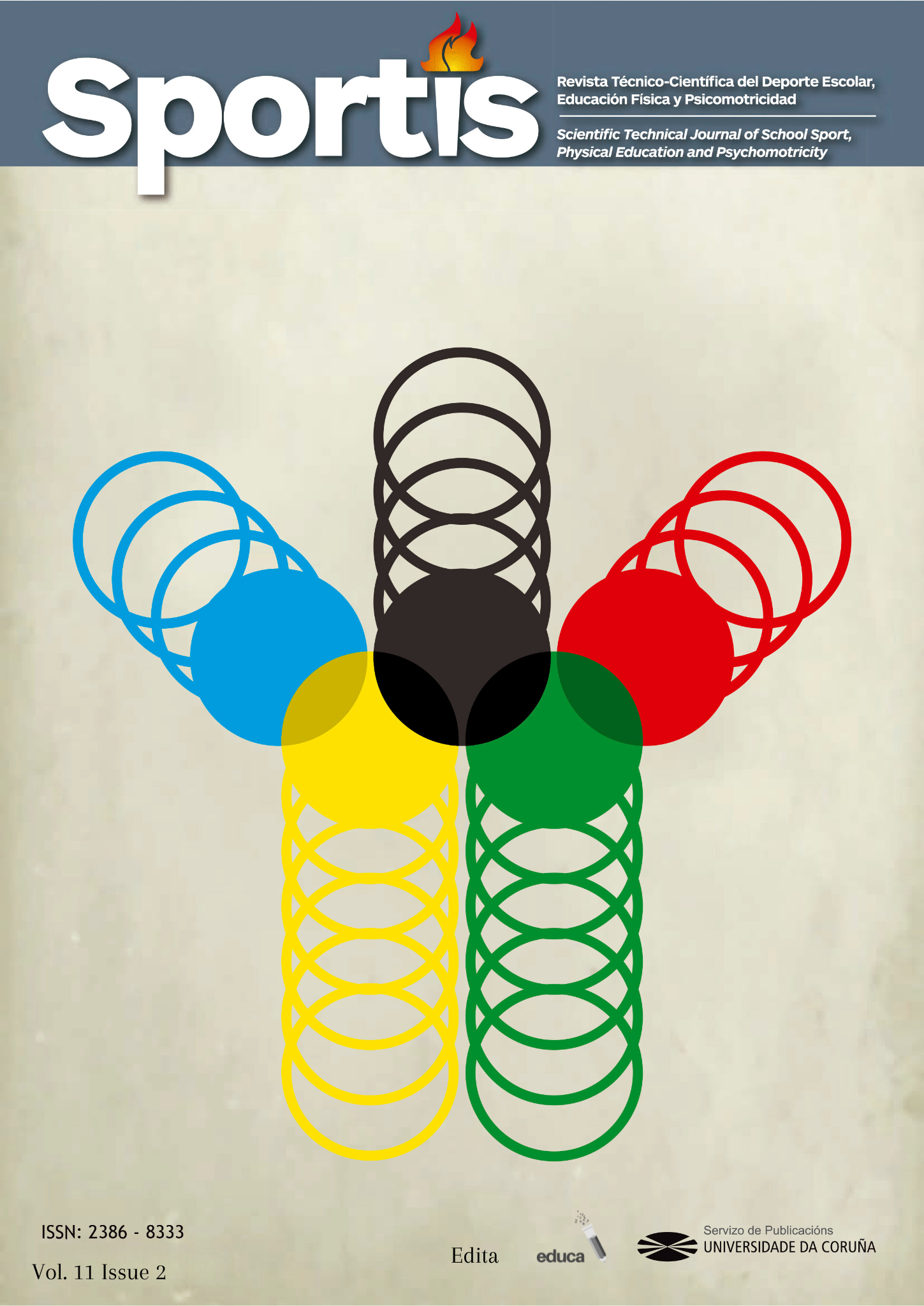Comparación de la memoria de trabajo y la velocidad de reacción de miembros superiores entre jóvenes tenismesistas y estudiantes universitarios
Contenido principal del artículo
Resumen
El tener una adecuada velocidad de reacción (VR), ayuda a preparar el cerebro para afrontar los desafíos de forma rápida y eficaz. El objetivo fue comparar la memoria de trabajo (MT) y la VR de miembros superiores, entre jóvenes tenismesistas y estudiantes universitarios no deportistas. Se evaluó un total de 30 sujetos (15 tenismesistas y 15 universitarios no deportistas). Se evaluó el peso, estatura y se calculó el índice de masa corporal (IMC). La VR se evalúo utilizando el equipo de la tecnología y aplicación neural trainer. La MT se evalúo a través de escala Vallat-Azouvi. Ambos grupos presentaron similares características antropométricas. No hubo diferencias en los indicadores de la MT (almacenamiento, atención y función ejecutiva) y en la escala total. En los indicadores de la VR, hubo diferencia únicamente en el tiempo promedio. Los tenismesistas presentaron mejor rendimiento en relación a los universitarios no deportistas. La relación entre la MT con el tiempo promedio de la VR, se observó que en los tenismesistas fue una correlación positiva (r = 0,27, p < 0,05) y en los universitarios no deportistas fue una relación negativa (r= -0,10; p >0,05). Los tenismesistas tienen una VR significativamente mayor que los universitarios no deportistas, lo que sugiere que el entrenamiento en este deporte mejora esta habilidad. Sin embargo, no hubo diferencias en la MT entre los grupos, lo que sugiere que esta capacidad cognitiva no se ve afectada por el entrenamiento en tenis de mesa.
Palabras clave:
Descargas
Detalles del artículo
Citas
Baddeley, A.D (2007). Introduction and overview. In: Baddley A, editor. Working Memory, Thought, and Action. Oxford: Oxford University Press; pp. 1–13
Baddeley, A. D., Hitch, G. J. (1974). Working memory and its role in complex cognitive tasks. Psychological Review.
Badau, D., Badau A, Joksimović M, Manescu CO, Manescu DC, Dinciu CC, Margarit IR, Tudor V, Mujea AM, Neofit A, et al. (2023). Identifying the Level of Symmetrization of Reaction Time according to Manual Lateralization between Team Sports Athletes, Individual Sports Athletes, and Non-Athletes. Symmetry;16:28. https://doi: 10.3390/sym16010028
Bhabhor, M. K., Vidja, K., Bhanderi, P., Dodhia, S., Kathrotia, R., & Joshi, V. (2013). A comparative study of visual reaction time in table tennis players and healthy controls. Indian journal of physiology and pharmacology, 57(4), 439–442.
Cano, L. A., Gerez, G. D., García, M. S., Albarracín, A. L., Farfán, F. D., & Fernández-Jover, E. (2024). Decision-Making Time Analysis for Assessing Processing Speed in Athletes during Motor Reaction Tasks. Sports (Basel, Switzerland), 12(6), 151. https://doi.org/10.3390/sports12060151
Cooke, A. (2009). Maximizing speed for athletic performance: The science and application. Journal of Sports Sciences)./
Cowan N. (2014). Working Memory Underpins Cognitive Development, Learning, and Education. Educational psychology review, 26(2), 197–223. https://doi.org/10.1007/s10648-013-9246-y .
Freitas, M. I. D., Ribeiro, A. F., Radanovic, M., & Mansur, L. L. (2007). Working memory: Differences between young adults and the aged in listening tasks. Dementia & neuropsychologia, 1(2), 147–153. https://doi.org/10.1590/s1980-57642008dn10200006 .
Furley, P., Wood, G. (2016). Working memory, attentional control, and expertise in sports: A review of current literature and directions for future research. Journal of Applied Research in Memory and Cognition;5(4):415425. https://doi:10.1016/j.jarmac.2016.05.001
Goleman, D. (2006). Inteligencia emocional: Por qué puede importar más que el CI. Editorial Kairós.
Goleman, D. (1995). Inteligencia emocional: Por qué puede importar más que el CI. Editorial Kairós.
Hülsdünker, T., Ostermann, M., & Mierau, A. (2019). The Speed of Neural Visual Motion Perception and Processing Determines the Visuomotor Reaction Time of Young Elite Table Tennis Athletes. Frontiers in behavioral neuroscience, 13, 165. https://doi.org/10.3389/fnbeh.2019.00165 .
Huang, Q., Mao, X., Shi, J., Pan, J., & Li, A. (2024). Enhanced Cognitive Inhibition in Table Tennis Athletes: Insights from Color-Word and Spatial Stroop Tasks. Brain sciences, 14(5), 443. https://doi.org/10.3390/brainsci14050443
Swann, C., Moran, A., Piggott, D. (2015). Defining elite athletes: Issues in the study of expert performance in sport psychology. Psychology of Sport and Exercise;16(1):3– 14. https://doi.org/10.1016/j.psychsport.2014.07.004
Schaefer, S., & Amico, G. (2022). Table tennis expertise influences dual-task costs in timed and self-initiated tasks. Acta psychologica, 223, 103501. https://doi.org/10.1016/j.actpsy.2022.103501
Schaefer, S., & Scornaienchi, D. (2020). Table Tennis Experts Outperform Novices in a Demanding Cognitive-Motor Dual-Task Situation. Journal of motor behavior, 52(2), 204–213. https://doi.org/10.1080/00222895.2019.1602506 .
Smith, J. (2018). La interacción entre lo físico y lo psicológico en el bienestar humano. Editorial Salud y Mente.
Sociedad Internacional para el Avance de la Kineantropometría (ISAK). (2001). Estándares internacionales para la valoración antropométrica. Australia.
Vallat-Azouvi, C., Pradat-Diehl, P., & Azouvi, P. (2012). The Working Memory Questionnaire: a scale to assess everyday life problems related to deficits of working memory in brain injured patients. Neuropsychological rehabilitation, 22(4), 634–649. https://doi.org/10.1080/09602011.2012.681110 .
Van Biesen, D., McCulloch, K., Janssens, L., Vanlandewijck, Y.C. (2017). The relation between intelligence and reaction time in tasks with increasing cognitive load among athletes with intellectual impairment. Intelligence;64(C):45-51. https://doi:10.1016/j.intell.2017.06.005
Vaughan, R., Laborde, S., & McConville, C. (2019). The effect of athletic expertise and trait emotional intelligence on decision-making. European journal of sport science, 19(2), 225–233. https://doi.org/10.1080/17461391.2018.1510037 .
Vaughan, R. S., & Laborde, S. (2021). Attention, working-memory control, working-memory capacity, and sport performance: The moderating role of athletic expertise. European journal of sport science, 21(2), 240–249. https://doi.org/10.1080/17461391.2020.1739143 .
Wang, J., Zhao, X., Bi, Y., Jiang, S., Sun, Y., Lang, J., & Han, C. (2023). Executive function elevated by long term high-intensity physical activity and the regulation role of beta-band activity in human frontal region. Cognitive neurodynamics, 17(6), 1463–1472. https://doi.org/10.1007/s11571-022-09905-z .
Wong, A. L., Goldsmith, J., Forrence, A. D., Haith, A. M., & Krakauer, J. W. (2017). Reaction times can reflect habits rather than computations. eLife, 6, e28075. https://doi.org/10.7554/eLife.28075 .
Wu, C., Zhang, C., Li, X., Ye, C., & Astikainen, P. (2024). Comparison of working memory performance in athletes and non-athletes: a meta-analysis of behavioural studies. Memory (Hove, England), 1–19. Advance online publication. https://doi.org/10.1080/09658211.2024.2423812 .
Zatsiorsky, V. M., Kraemer, W. J. (2006). Science and Practice of Strength Training (2da. ed.). Champaign, Illinois: Human Kinetics Publishers, Inc. 264 pp






